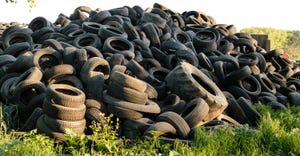Few sights are as discouraging as pulling up to a stoplight and looking down into a gutter choked with spent cigarette butts. And yet studies show that people who would never litter otherwise feel no remorse about tossing cigarettes on the ground.
Cigarette litter presents a unique challenge in that a lit cigarette can't just be tossed into a trash can. Thus, a staggering number of cigarettes wind up in the environment as litter. Each year, as part of its International Coastal Cleanup, the Washington-based Ocean Conservancy publishes a list of the top ten debris items collected. Cigarette butts and filters topped the 2005 list, comprising 31.4 percent of the waste collected from U.S. shorelines and waterways.
In 2002, Philip Morris presented Keep America Beautiful (KAB) with a grant to research ways to cut down on cigarette litter. Program Director Carrie Gallagher was hired by KAB to create a multi-pronged program to combat the problem. In the ensuing years, she has worked with communities around the country to establish anti-cigarette litter campaigns, first targeting urban areas and last year focusing on the unique challenges presented by parks, recreation areas and beaches. Her findings became the basis of KAB's Cigarette Litter Prevention Program (CLPP).
The program is comprised of four interlocking parts. The first and broadest is a review of a community's litter and waste handling ordinances. Are cigarettes addressed? Are fines effective? Gallagher says regions with prominent natural resources - such as timberlands, large bodies of water or wildlife preserves - usually have the most stringent litter laws. “Washington and Oregon, places like that, are very concerned about a lit cigarette going out a window,” she observes.
The CLPP also focuses on education. KAB has developed public service announcements, talking points and guides to help community leaders, businesses and solid waste authorities educate themselves and the public about cigarette litter. This material can be found on a CD-ROM titled “The Guide to Cigarette Litter Prevention,” available for free at KAB's Web site.
The third part of the program addresses the design and placement of ash receptacles. Gallagher says receptacles are most effective when they are located at “transition points,” places where smokers move from an area where smoking is allowed to where it isn't.
“It's not a light pole,” says Gallagher. “It's an ash receptacle. You need to track human behavior. You need to watch where humans need receptacles. That will be identified as a transition point. Make sure there's a receptacle there and that it's an ash receptacle, one that's designed specifically for cigarettes.”
Poor design is often part of the problem, says Gallagher. She cites an example where ash receptacles were simply designed like small trash cans. “They ended up with little stuff in it, like little cups and little paper.”
More often, she says, ash receptacles are haphazardly combined with trash cans, compromising the effectiveness of both. Something as simple as a discarded newspaper left on top of the sand-filled ashtray nullifies its effectiveness. And anyway, Gallagher says, open buckets or trays of sand are impossible to keep clean.
Gallagher says effective ash receptacles should be single purpose, with openings designed specifically for cigarettes. Side openings will mitigate the effects of snow, sleet, wind and rain. She favors anodized metal for its durability. And receptacles should be able to go days or even weeks before requiring emptying.
Because such ideal receptacles are often hard to find, Gallagher introduced the fourth part of the program, the “pocket ashtray.” Distributed by participating organizations, the pocket ashtray features a metal compartment that smokers can use to extinguish cigarettes. A sliding door allows smokers to cleanly encapsulate several butts until a suitable method of disposal is available. KAB expects to distribute more than 50,000 of the devices by the end of this year. More than 50 communities implemented the CLPP this year. Gallagher says research into the next frontier — combating cigarette litter on roadways and highways — will begin next year.
About the Author(s)
You May Also Like


